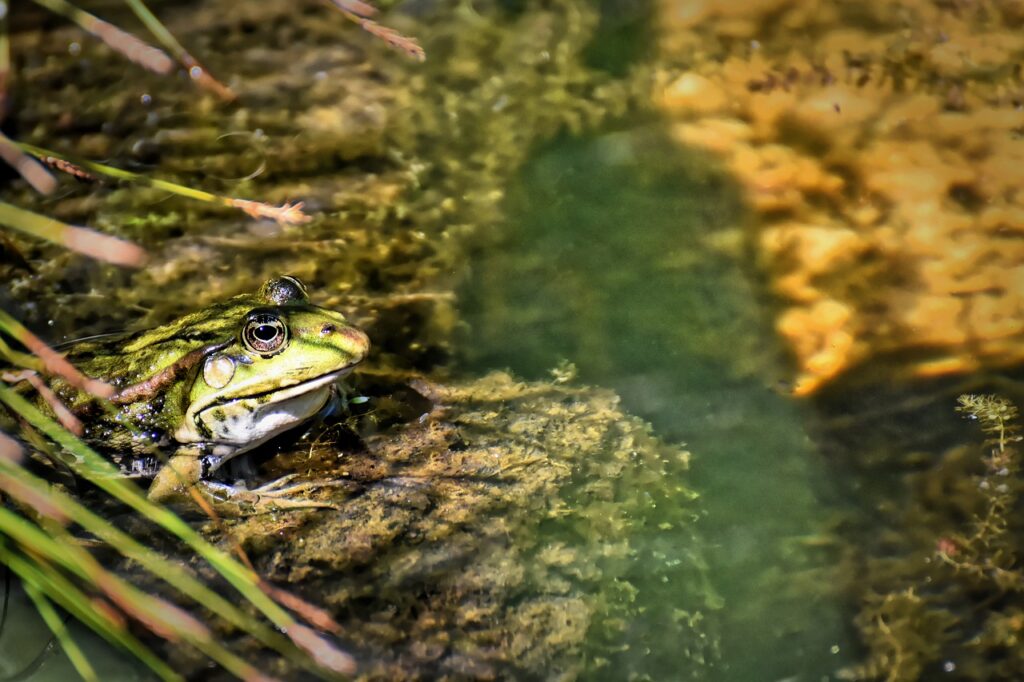Frog Ponds
A good frog pond design provides a habitat for the frogs to go through their lifecycle. From eggs, to tadpoles and then develop into frogs. Some Australian native plants should be included in the frog pond design as they not only aid in creating a suitable environment, they can also provide the pond ecology with food, shelter and can even provide nesting materials for other wild life.
The real joy comes when you hear the first frog in your garden.
How do I attract frogs to my garden?
Build a pond and they will come.
The Key is to try to create an environment that fulfils their needs.
- Healthy pond water. Muddy green water can still be fine for frogs, but pollutants such as heavy metals, detergents and other chemicals are harmful.
- Plants to provide shelter from strong sunlight and protection from predators.
- Algae and softer leafed water plants, for tadpoles to feed on.
- Insects and other organisms that frogs can feed on.
- Areas for the frogs to climb up out of the pond. Frogs are terrestrial and only really need the pond to breed.

Do I need native water plants in my frog pond design?
In truth, No. Native aquatic plants can improve the potential to create an ecologically balanced environment around your frog pond design. However, realistically in an urban environment, we have already made significant impacts. To try to reverse everything and return our environment back to its original state would be virtually impossible. By all means try to include some native plants into your frog pond design, but don’t think that a pond, without any native plants, will not provide a habitat or won’t attract frogs.
A perfect example, is in our own nursery. We have recorded 7 different species of frogs. We also have students from Monash University coming to our nursery to undertake studies of some frogs, because they are easier to find here, than in the wild.
Many species of frogs breed happily in our ponds and many only have one type of plant or variety of water lily growing in them. None of the waterlilies are native to our area, yet they still attract frogs. We started off with a bare empty paddock. Our nursery team regularly collect water lilies to distribute to the garden centres. During Spring, they often need to remove the frogs eggs from in between or attached to the plants, prior to pulling them out of the ponds. The eggs are left behind in the pond water to hatch at a later date. Human interference, yes but we still need to run a business.
Does it matter if my frog pond dries out in summer?
Not at all. A pond that fills with seasonal rains and then slowly dries out, is actually replicating what occurs in nature. When rain falls, many frogs come out to breed in natural waterholes. The eggs are laid and fertilised. As time passes the eggs hatch and tadpoles then are able to swim freely in the pond water. The tadpoles are herbivores and only feed on algae and softer leafed plants. As their bodies transform into frogs, they then climb out of the pond to live on the land. So in any frog pond design, they only need the water for part of their life cycle.
Tips
- To choose a selection of plants for your frog pond design, refer our Zone Map page
- To choose a selection of Australian native plants go to our Native Water Plants page.
- For information on plant care, go to our Tips & Hints page.
- Click on the following link for information on Pond maintenance



